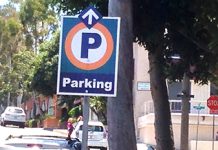By Charlie Warner, Special to the Independent

North America will experience a solar eclipse Monday, Aug. 21, but only those under the sun’s path from the northwest in Oregon to the south in Georgia will see it in its entirety.
Locally, Laguna Beach will be able to view between 60% and 70% of the obscuration of the sun by the moon, as opposed to the complete blockage that others will experience in more northern states. Griffith Observatory in Los Angeles will be open for public viewing, as will observatories at Cal State Fullerton and Orange Coast College. The eclipse will begin locally at 9:08 a.m.
Some locals feel compelled to pursue the full experience. “Because I grew up in Oregon, it’s especially important to me that I see the eclipse there,” said Ellen Girardeau Kempler, a Laguna Beach resident. “This will be my first total solar eclipse. My husband and I will be camping in the ‘Path of Totality’ with friends from SoCal at the Wooden Shoe Tulip Farm in Woodburn, Ore.”
“My recently deceased dad was a physicist, nature lover and amateur astronomer who encouraged a love of science, nature and the universe in all three of his daughters,” said Kempler. “One of my earliest memories is watching the crescent shadow of a solar eclipse pass across the back of an oatmeal box viewer he made me. Looking back at historical records of eclipses, I’ve determined I was probably only 3 at the time.”
Eye protection is vital during solar eclipses. Specialty glasses can be purchased, as well as pinhole viewers. The eclipse can be seriously damaging to viewers eyes.
“You will be able to see at least a partial eclipse as long as the weather is clear. If you can watch the event in person, you’re in for a treat,” said Kempler. “Scientists describe a multi-sensory experience that includes rapidly moving light and shadow, dropping temperatures and a changing soundscape; for example, crickets falling silent as the thermometer dips.”
The next solar eclipse to occur in North America will be in 2024, according to greatamericaneclipse.com.





Smartest way to view the eclipse is to look at the dappled shadows beneath a tree. The spots of light will assume the shape of the sun.